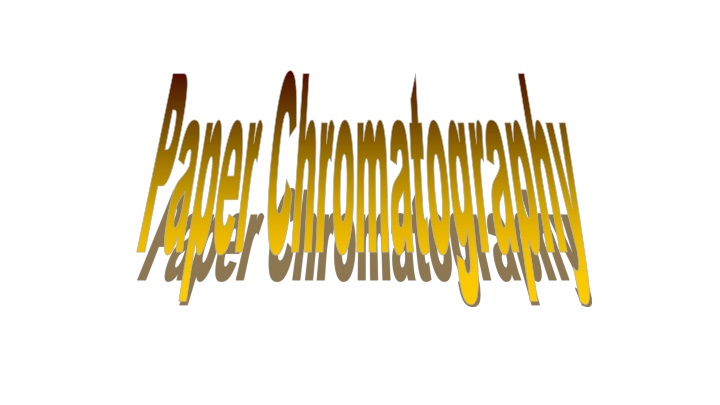
Paper Chromatography Technique for Substances Separation
Learn about paper chromatography, a method using filter paper strips to separate mixtures of solutes based on partition between immiscible phases. Discover the general procedure, techniques of development, and the concept of multiple chromatography in this informative guide.
Download Presentation

Please find below an Image/Link to download the presentation.
The content on the website is provided AS IS for your information and personal use only. It may not be sold, licensed, or shared on other websites without obtaining consent from the author. If you encounter any issues during the download, it is possible that the publisher has removed the file from their server.
You are allowed to download the files provided on this website for personal or commercial use, subject to the condition that they are used lawfully. All files are the property of their respective owners.
The content on the website is provided AS IS for your information and personal use only. It may not be sold, licensed, or shared on other websites without obtaining consent from the author.
E N D
Presentation Transcript
Paper Chromatography A method of partition chromatography using filter paper strips as carrier or inert support. The factor governing separation of mixtures of solutes on filter paper is the partition between two immiscible phases. One is usually water adsorbed on cellulose fibres in the paper (stationary phase). The second is the organic solvent flows past the sample on the paper (stationary phase).
Partition occurs between the mobile phase and the stationary aqueous phase bound by the cellulose. The isolation depends on partition coefficient of the solute. ( ( c mobile Where, K:Is the partition coeffcient. C (Stationary: Is the concentration of the solute in the stationary. C (Mobile): Is the concentration of the solute in the mobile. ) c stationary = K )
General Procedure 1- Choice of paper and solvent to be used. 2- Desalting of sample. 3- Application of the sample. 4- Equilibration of paper. 5- Development. 6- Detection. 7- Identification of substances.
Techniques of development with various flow directions Radial development Ascending development Descending development
Multiple chromatography Multiple chromatography includes all procedures in which the development is repeated after one development is completed. A- multiple development: the chromatogram is repeatedly developed in the same direction and thus the complete resolution of two or more substances which have Rf values close together can be obtained. As the mobile phase one can use either the same solvent system or different solvent systems.
B- two-dimensional chromatography: When large numbers of substances are to be separated on a single chromatogram. Development in a direction perpendicular to the first, and with a solvent system different from that used initially is often necessary. The sample is applied on one corner of a square piece of paper and after development with the first solvent, the paper is dried , rotated 90o and developed in the second direction. Usually, different types of solvents systems are used in each direction. It is essential that the first solvent be completely volatile.





















